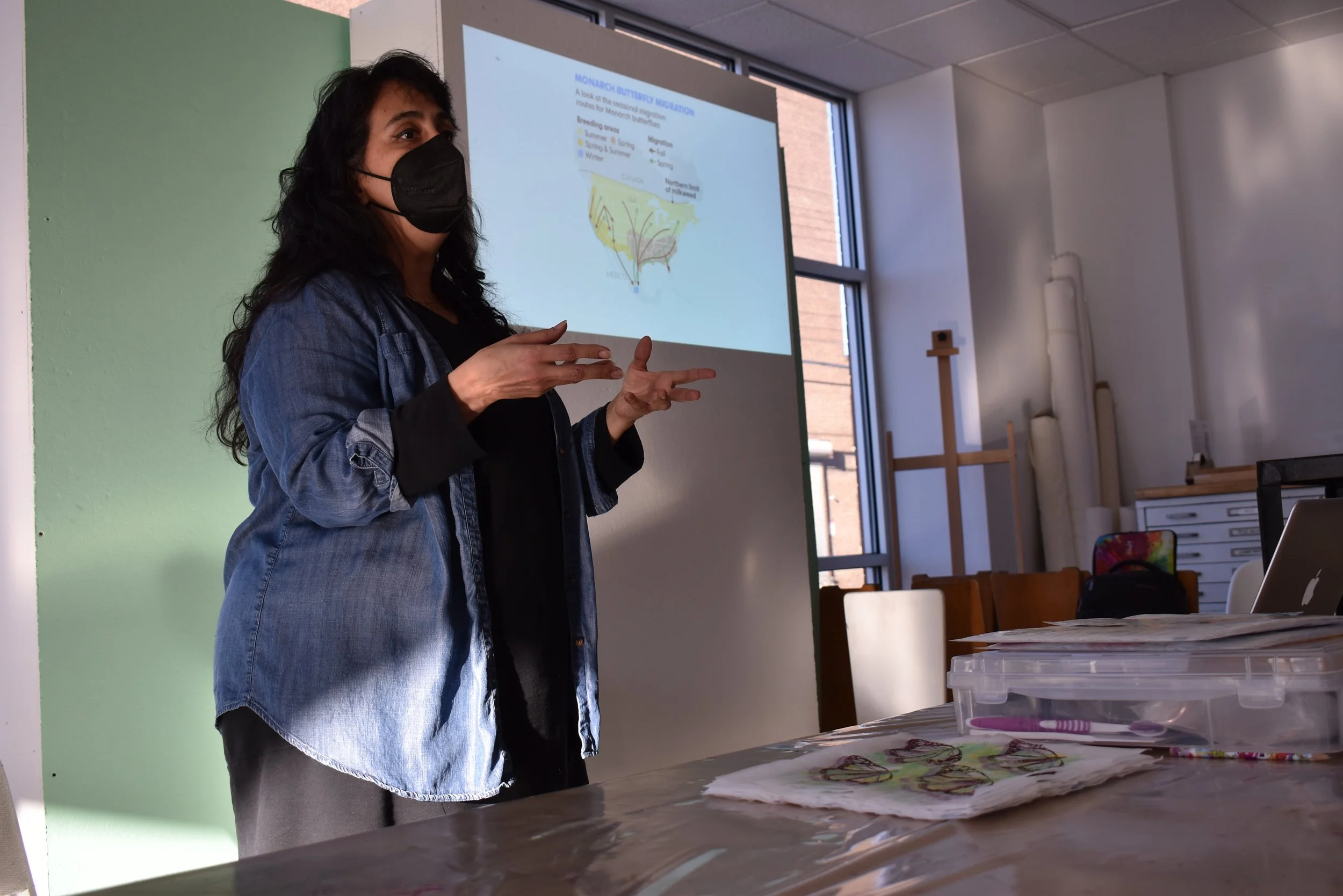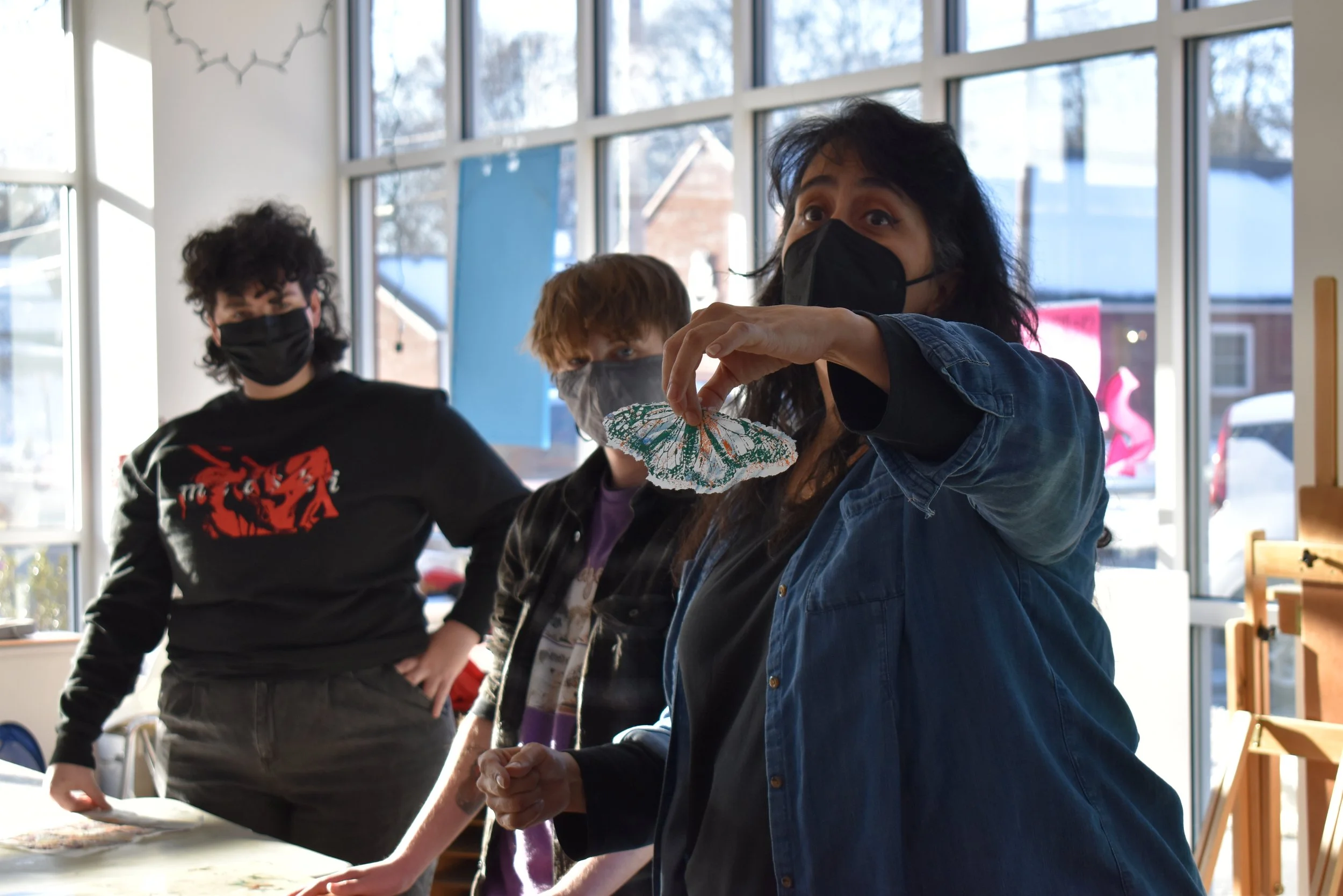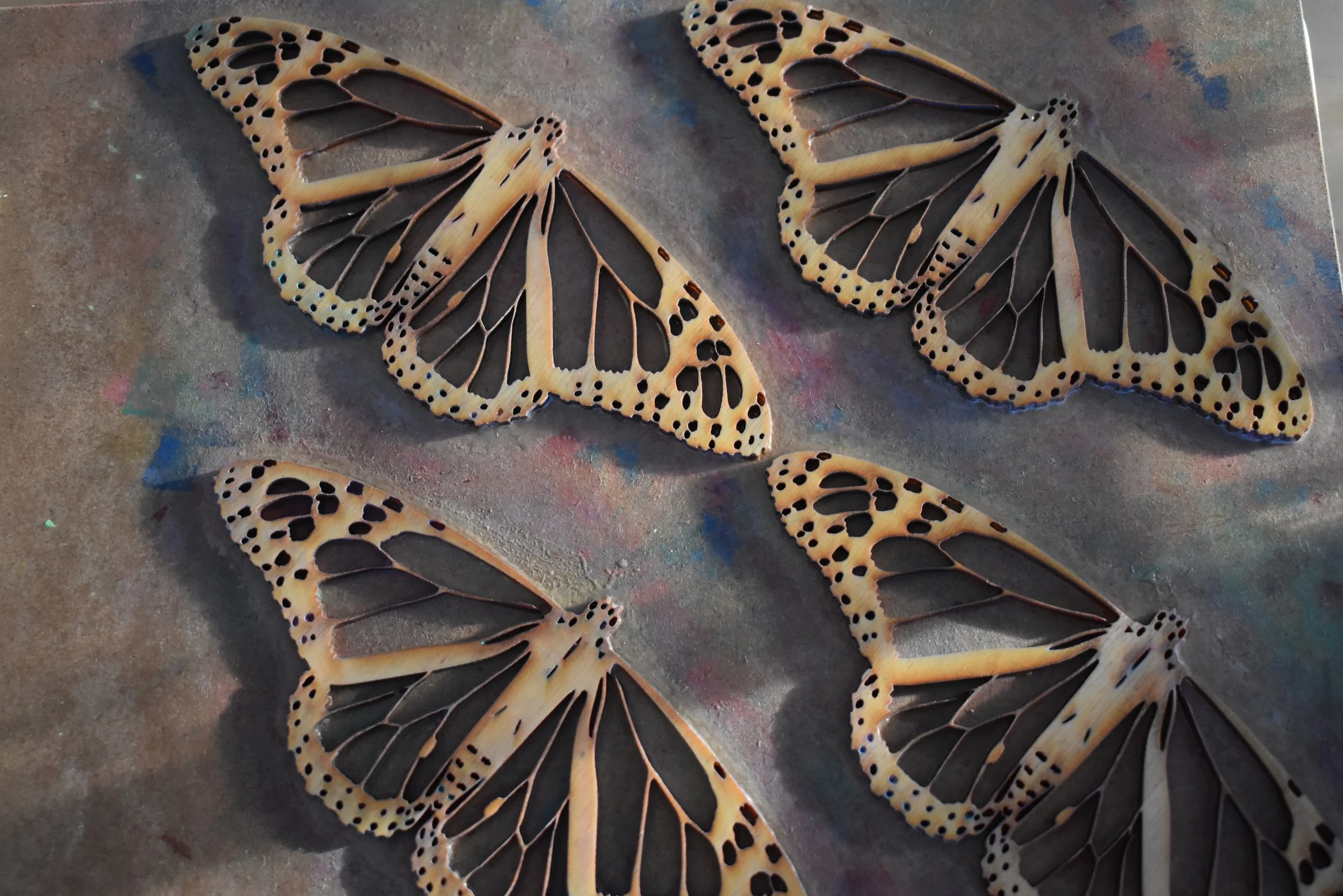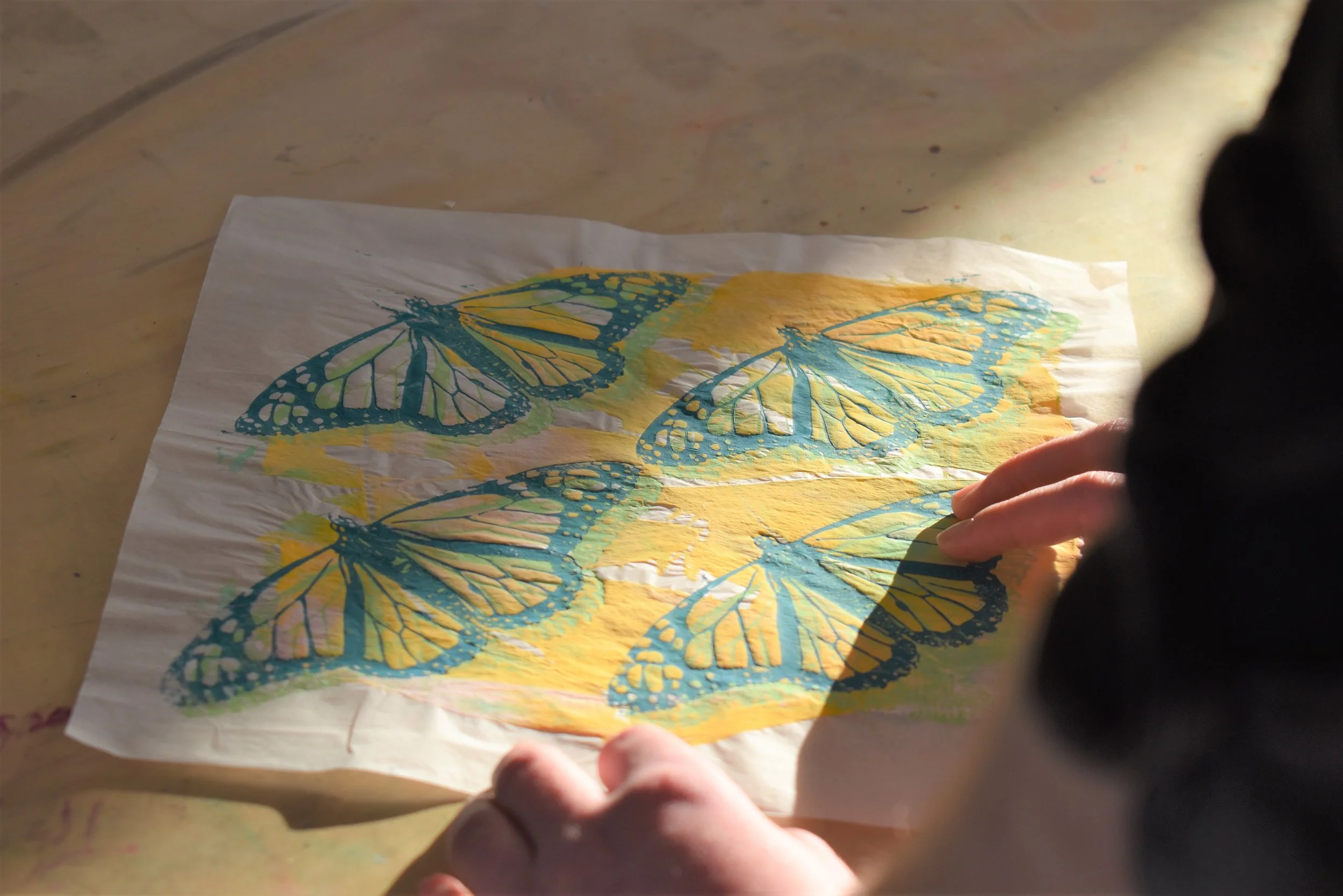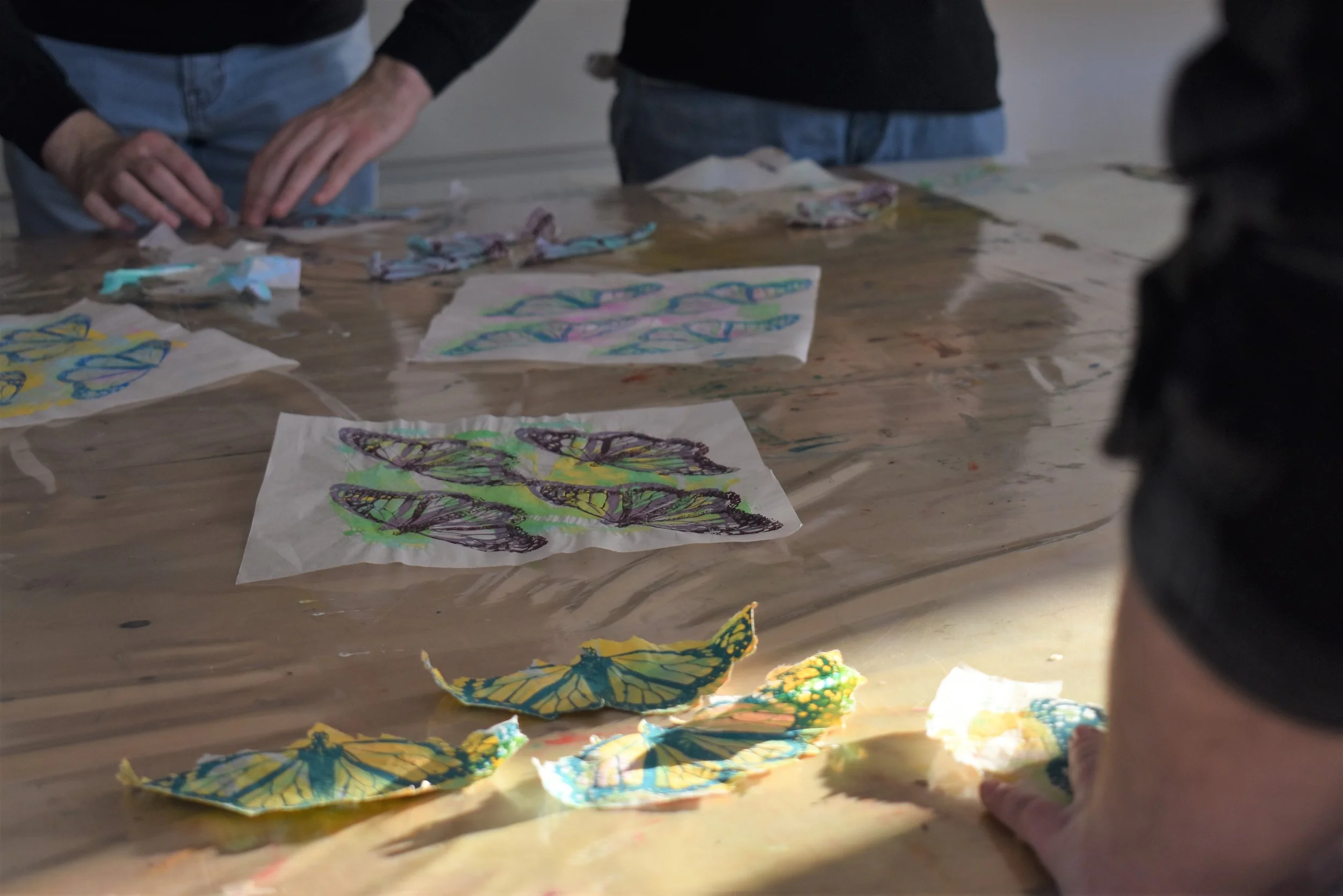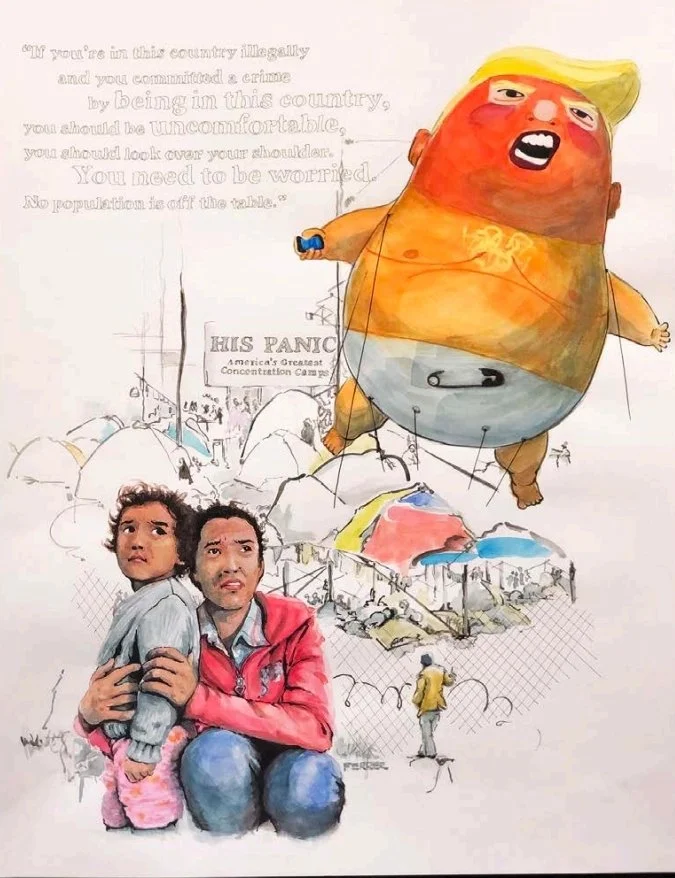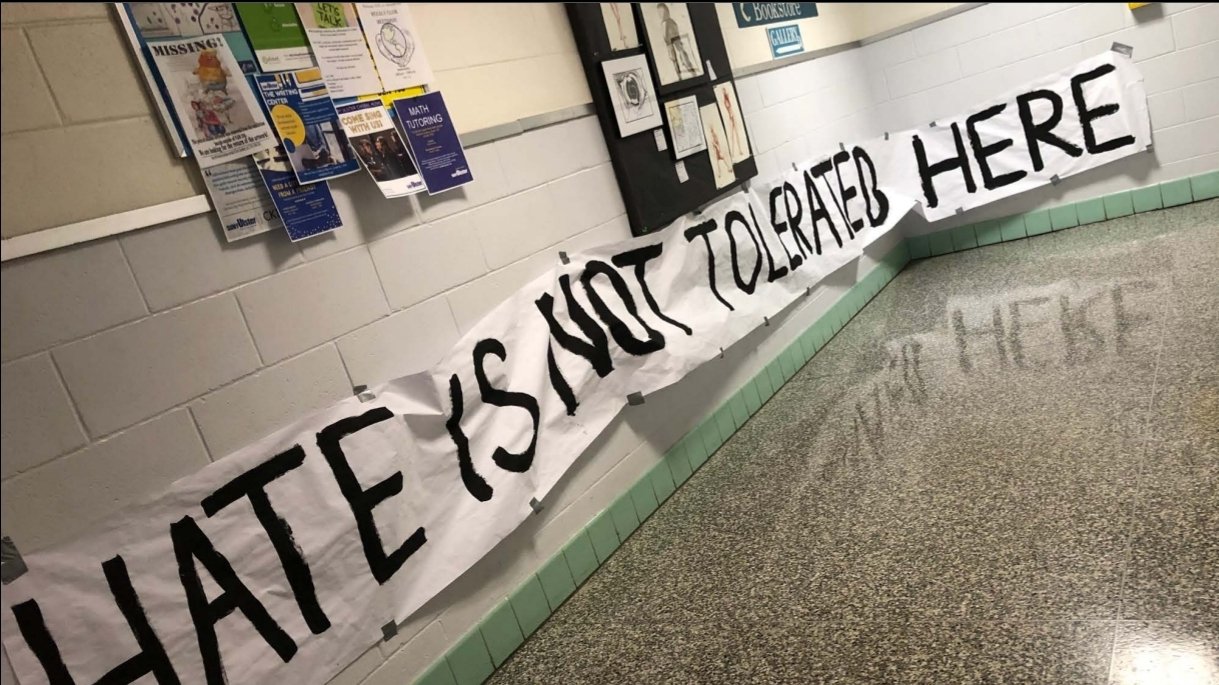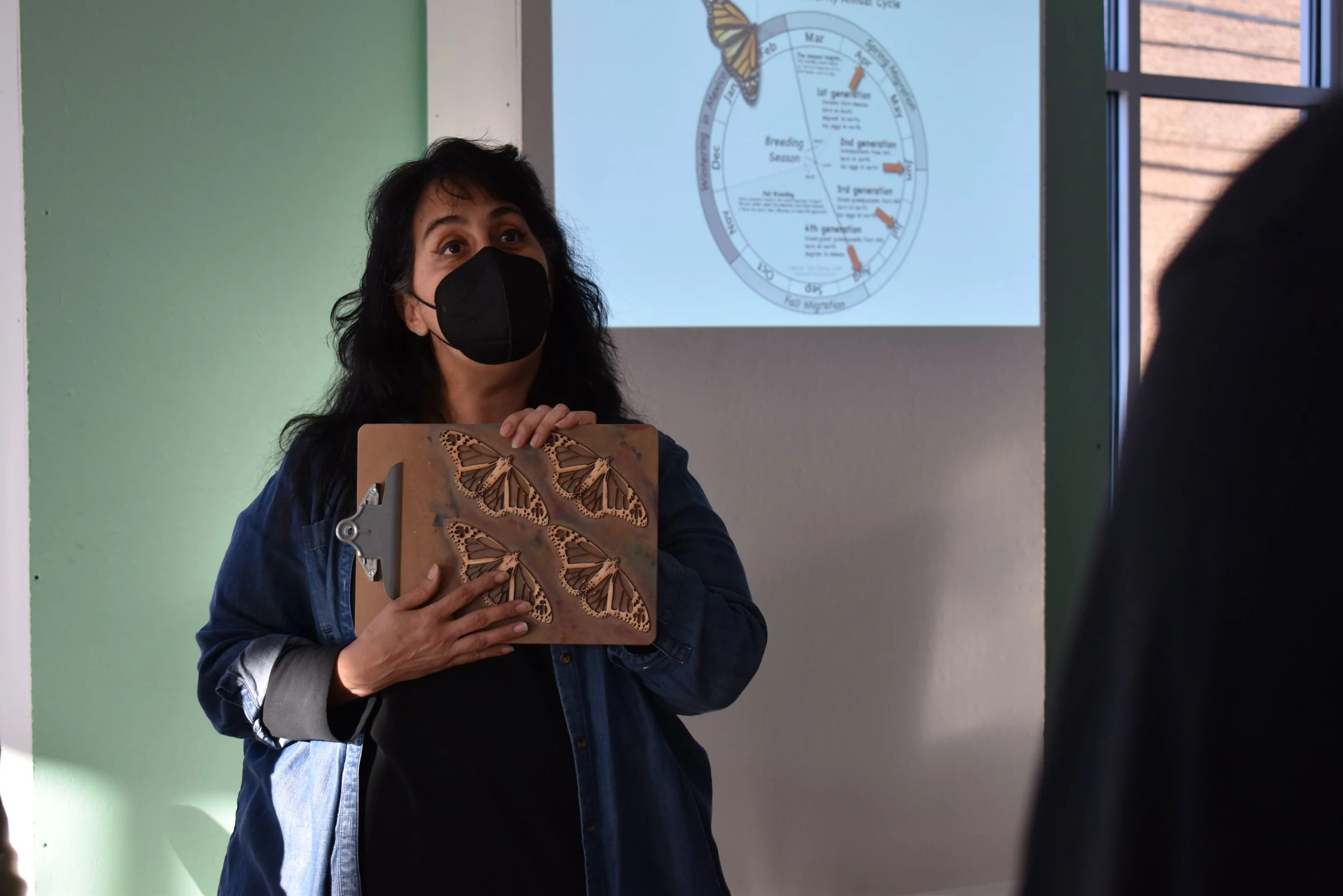By Gregory Haller
Photos by Maxine Leu
We’re in constant motion. When something happens in the world, whether that be a natural disaster, economic crisis, or medical breakthrough, we notice–for a moment and then move on. Because we cannot give each event our full attention, much goes unaddressed. Headlines come and go, and unless an issue affects us directly, we don’t focus on it. The important conversations we need to have are often forgotten. While the scope of the world is large, our perspective is limited.
Art stops us and grabs our attention. With art, our vision is broadened, showing us the problems others face, the issues we deem taboo, and the conflicts we have trouble talking about.
In January we were shown Marielena Ferrer-Harrington’s thesis project, Broken Monarchs, for her BFA in Sculpture at SUNY New Paltz. Marielena is an artist and art educator who is also a member of the Kingston Arts Commission and Kingston’s Diversity Equity and Inclusion Task Force. Dozens of sheets of tissue paper printed with colorful monarch butterflies were displayed on a table. Each sheet depicted four butterflies overlaid with a second printing in varying colors and intensity that was slightly misaligned. Marielena described the butterflies’ migration and explained how she had printed 5,500 of them, which is the number of migrant children who’d been separated from their parents at the southern border under the “Zero-Tolerance” policy enforced by the Trump administration in 2018. She explained how she was going to make an installation in which each butterfly, ripped from the page and displayed, represented one of those children: the butterflies will be hung in clusters from the ceiling.
With nearly 20 years of experience in leading workshops, Marielena knows how to speak to an audience. Charismatic and bright, she had our full attention when she spoke. Hearing from artists’ directly is such a rich experience because I get immersed in their art, their methods, and them.
Every detail of the butterflies related back to an aspect of the children’s suffering. The medium of the tissue paper expressed their fragility, and each of the monoprinted images was unique, reflective of each child’s experience. The misaligned overlap was to show “a duality,” as Marielena put it. The error in the printing referred to the abruptness of the children’s lives changing from hope for a better future to the cruelty they encountered. The overlapping patterns represented the children’s innocence and its destruction. The tears in the wings were the scars from the families being torn apart.
Marielena put her butterfly stencils on a clipboard to print them. Which, in my opinion, is a much better use of a clipboard than clipping a boring piece of paper on it. Props for ingenunity!
When I looked at the pieces of tissue paper, I thought of how each butterfly has a unique beauty. From the soft fluttering of their wings to their striking patterns, butterflies seem so peaceful to me. As Marielena talked to us about how they migrate together, her voice was lower than her usual bubbly tone, and I could tell there was more to what she was saying than just the insects’ migration. We ripped out each butterfly from the sheet as she spoke about how the children were mistreated while in custody of the U.S. government. Put inside what essentially were cages, the children had little room and often were hungry and scared. Children as young as toddlers—some even babies—were isolated from their parents and suffered psychological trauma. We shared how we were horrified at the abject cruelty of this treatment. When Marielena, an immigrant herself, was speaking, I could tell the subject was a wound that cut deep.
Working together is always a unifying experience to me. I really enjoy working with these guys, no matter what we do. I am our own biggest fan. Also, I hoped we helped make a dent in the thousands of butterflies Marielena has left to rip out! (Do you see the way I’m holding the paper in the first image? It’s like I’m holding paper for the first time. So strange.)
While she was a student at SUNY Ulster two years ago, before transferring to SUNY New Paltz, an artwork she made about Trump’s family separation policy was vandalized. The artwork, which was in a group display, was taken down and later found torn up in the garbage.
When her classmates discovered it was missing, they put up a poster on a wall in the college protesting the removal. Subsequently students posted messages, drawings, and even a banner to show their support to Marielena, and there were thousands of social media posts. The leadership of SUNY Ulster addressed the situation by meeting with her and other students as well as faculty members and expressed solidarity. She was told to not “let [the incident] tell you to quit. It just means your art is powerful.
It was upsetting to have her art vandalized, but the incident got people talking about the children’s suffering again, fulfilling Marielena’s overall goal, which is to start a conversation. Marielena wants to use her art to “educate about immigration in interactions” with others so they can engage “politically with immigration.” She uses her artwork as a catalyst for discussion, to bring people together regardless if they’re like-minded or in opposition about the subject matter.
Titled “His Panic” Marielena’s artwork was transformational at SUNY Ulster. We can’t pinpoint what will be the trigger for something that’ll inspire people to communicate, but when a conversation tries to be silenced it only makes it louder. Also if you go around tearing down someone’s art, dude like control that temper this isn’t kindergarten. /These photos were provided by Marielena
We cannot underestimate the power of art to begin a conversation. We need artists like Marielena to push us to talk, even if it makes us uncomfortable. Talking isn’t necessarily the direct solution, of course, but if we remain unaware we’re actually adding to the problem. Through her art, Marielena uses her voice to show support for those migrant children. “It’s to make you aware of how things can go wrong, so, so wrong,” Marielena said. Art engages us and helps us grow. We need that growth if we want to prevent the horrors we’ve seen happen in the past from happening again.
Each crinkle in the paper, every rip across each of the butterfly’s wings, brought me back to the absolute terror of those kids. Marielena’s work is a beautiful signifier of the ugly atrocities that were committed. And it ensures the enduring pain of those children doesn’t get forgotten as old news. “Art has a power,” Marielena said. “You need to get the message out there.” Art can raise awareness and get messages across to people without triggering the partisanship, prejudice, or other immovable beliefs from flaring up that divide people.
Artists’ voices are powerful. Starting a social movement can prove tumultuous, but these small interactions with one another can bridge the divide between people. Art leads to these talks and the introspection we all need. When we use our voice in art, we can never be silenced. Art is a tool to push our communities closer together and raise awareness. With art, our perspective is unlimited.
María Elena, “Marielena”, Ferrer-Harrington is a socially engaged artist who has been active in helping and raising awareness about immigrant communties. She has served in numerous positions, such as Executive Director of Humanamente, member of the Ulster County Human Rights Commission, and Director of Athena Network New York.
You can find more of her artwork at:

